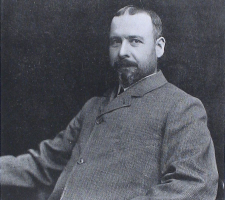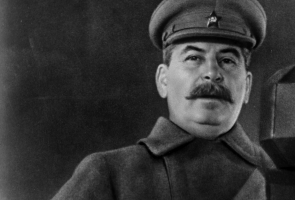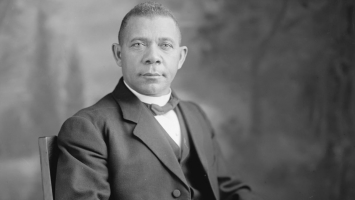Top 13 Interesting Facts about Henry Ford
Welcome to our post on interesting facts about Henry Ford, one of the most well-known figures in the car business! He is well recognized for being the creator ... read more...of the prestigious automaker Ford Motor Company. Additionally, he was in charge of creating the industry's mass production-capable assembly line. Join us as we explore the life and accomplishments of this amazing person.
-
Henry Ford was born on a farm in Springwells Township, Michigan, on July 30, 1863. His father, William Ford (1826-1905), was from a family that left Somerset, England in the 16th century and was born in County Cork, Ireland. His mother, Mary Ford (née Litogot; 1839–1876), was adopted by neighbors, the O'Herns after her parents passed away when she was a little kid. She was born in Michigan as the youngest child of Belgian immigrants. Margaret Ford (1867–1938), Jane Ford (about 1868–1945), William Ford (1871–1917), and Robert Ford (1873–1934) were Henry Ford's siblings. Ford completed the eighth grade at Springwells Middle School, a one-room school. He didn't go to high school but took an accounting course at a business college. When he was 12 years old, his father handed him a pocket watch. Ford began disassembling and reassembling friends' and neighbors' watches when he was 15 years old, earning him the title of a watch repairman.
Ford claimed that in 1875 when he was 12 years old, two important incidents happened. He was given the watch and saw a Nichols and Shepard road engine in action, which he described as "the first vehicle I had ever seen that wasn't horse-drawn." Ford created a "steam wagon or tractor" and a steam automobile in his farm workshop, but he felt that "steam was not ideal for light vehicles" because "the boiler was unsafe." Ford said that he "could not see the value of experimenting with electricity" owing to the high cost of trolley wires and the lack of any storage batteries that could hold a meaningful amount of weight.

www.history.com 
www.history.com -
After his mother passed away in 1876, Ford was distraught. Though he detested agricultural work, his father had expected him to someday take over the family farm. "I never had any special affection for the farm, it was the farm's mother that I adored", he later wrote. Ford left his home in 1879 to work in Detroit as an apprentice machinist, first for James F. Flower & Bros. and then for the Detroit Dry Dock Co. He went back to Dearborn in 1882 to work on the family farm, where he honed his skills with the Westinghouse transportable steam engine. Later, Westinghouse employed him to maintain its steam engines.
After three years, Henry Ford moved back to Dearborn to work on the family farm, although he continued to run and maintain steam engines and occasionally take shifts in industries in Detroit while also doing bookkeeping duties. These abilities would enable him to succeed as an engineering business tycoon in the future. He wed Clara Bryant, who was raised on a nearby farm, in 1888. They only have one kid, Edward Ford. Ford ran a sawmill for the first few years of his marriage to provide for him and his new bride.

www.history.com 
www.bridgemi.com -
One of the interesting facts about Henry Ford is he had a lifelong friendship with Thomas Edison. He and Clara returned to Detroit in 1891, where he was employed by the Edison Illuminating Company as an engineer. He advanced swiftly through the ranks, and two years later he was named chief engineer. Being on call around-the-clock for his position at Edison, Ford used his sporadic free time to work on developing a gasoline-powered horseless vehicle, or automobile. He finished the "Quadricycle," which he dubbed it, in 1896. It had a light metal frame with four bicycle wheels and a two-cylinder, four-horsepower gasoline engine.
When Ford met Thomas Edison in 1896, Edison endorsed his experiments and pushed Ford to create and construct more cars. Ford left the Detroit firm in 1899 to start his own auto manufacturing company with the money provided by his investors. The two men began a lifetime relationship as Ford rose to fame and fortune over time. They were no longer neighbors in 1916 when Ford bought a property close to Edison's vacation house in Fort Myers, Florida. Additionally, Ford and Edison made a series of camping trips in Ford vehicles between 1914 and 1924 while touring the eastern United States. As a result of the vacations, Ford automobiles and Firestone tires received publicity with headlines like "Millions of Dollars Worth of Brains off on a Vacation."
www.bridgemi.com 
www.bridgemi.com -
Ford decided to sell the Quadricycle to continue creating additional cars because he was determined to enhance his prototype. Over the following seven years, Ford was successful in securing the financial support of twelve investors, including timber magnate William H. Murphy and Detroit mayor William Maybury. Henry Ford founded the Detroit Automobile Company on August 5, 1899. However, due to their poor quality and exorbitant cost, the resulting cars were a far cry from what Ford had in mind. Ford was compelled to terminate the firm by January 1901 when it failed.
Only 20 automobiles could be produced overall throughout its existence, and around $86000 in investments or $2.61 million in 2019 were wasted. One of the interesting facts about Henry Ford to note is that in October 1901, Ford created, built, and raced a 26-horsepower car to win back the confidence of investors. Murphy and other investors from the former business came together on November 30, 1901, after seeing this accomplishment, to create the Henry Ford Company. Ford quit his eponymous firm in 1902 when his partners, anxious to release a passenger automobile on the market, got impatient with his relentless pursuit of improvement. After he left, it underwent a reorganization to become the Cadillac Motor Car Company.

www.thehenryford.org 
www.thehenryford.org -
Ford created the Ford Motor Firm in 1903 by combining his company with another automaker. After much testing and research, he created the Model T, an inexpensive vehicle that was also easy to operate. The two-cylinder, eight-horsepower Model A was put together at a facility on Mack Avenue in Detroit one year after the Ford Motor Company was founded. At that time, only a small number of automobiles were put together each day, and they were manually put together by teams of two or three employees using components that were procured from other businesses. The Model T, which debuted in October 1908, was the culmination of Ford's commitment to creating an effective and dependable car that would be affordable for everyone.
The majority of Americans had mastered the Model T by the late 1920s. Due to this breakthrough, the American middle class could now be served by the automotive industry. In essence, this shifted the perception of the vehicle from being an expensive luxury item solely utilized by the affluent to something useful to everyone. The majority of people are aware of this well-known Henry Ford truth, which is one of the interesting facts about Henry Ford.
A transcontinental vehicle race called the Ocean to Ocean Automobile Endurance Contest was staged. Ford stated that it would "give Americans a chance to understand the immense possibilities of the motor automobile" during the race's publicity. Compared to its heavier and more potent rivals, Ford's Model T appeared frail at the start of the race. The Ford No. 2 vehicle, a stripped-down Model T, was the first to reach the finish line after 23 days on the road, but as the race went on, its benefits became clear. The Ford's vehicle was eventually declared ineligible due to an illegal engine swap that was made during the race. However, the Model T eventually became the most popular automobile throughout the first part of the 20th century.

www.pinterest.pt 
www.pinterest.pt -
The Model T, often known as "Tin Lizzie", became popular right once, and Ford quickly had more orders than it could fill. As a consequence, he used mass-production methods including the moving assembly line, vast manufacturing facilities, and interchangeable, standardized parts that would completely transform American industry. The time it took to create a vehicle was greatly reduced because of mass production, which kept costs low. Setting a precedent for the industry, Ford also upped the daily compensation for his employees in 1914 from $2.34 for a nine-hour day to $5 for an eight-hour shift.
Demand for the Tin Lizzie remained high despite increased manufacturing, and by 1918, the Model T made almost half of all automobiles in America. Ford appointed his son Edsel as president of the Ford Motor Company in 1919, although he continued to have complete control over the business. Henry Ford bought out all minority investors by 1920 following a legal struggle with his stockholders, led by brothers Horace and John Dodge. Ford shifted manufacturing in 1927 to a vast industrial complex he had constructed in Dearborn, Michigan, along the River Rouge.
The factory had an assembly line, a steel mill, a glass factory, and all the other things required to make an automobile. Ford stopped producing the Model T in the same year and unveiled the new Model A, which had upgrades to the brakes and horsepower. Ford Motor Company was the largest automaker in the world at the time, having manufactured over 15 million Model Ts. Ford established activities and plants all over the world.
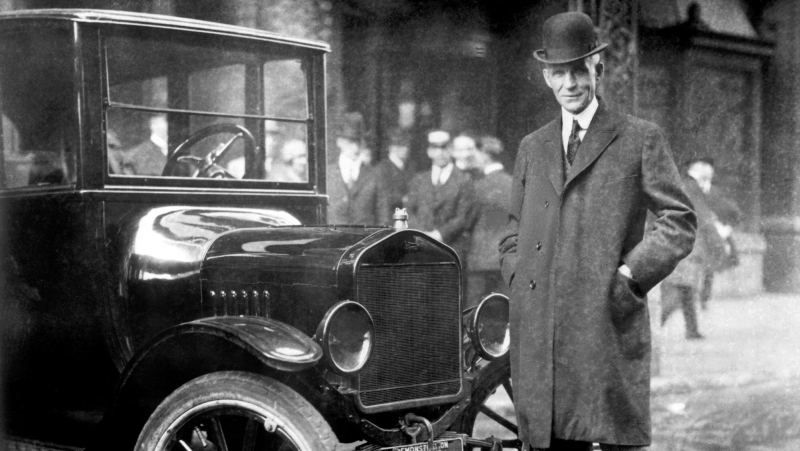
www.history.com 
www.history.com -
Ford raised worker pay rates by establishing the idea of the "Five Dollar Wage," which, after accounting for inflation, amounts to almost $130 today. This move attracted the best mechanics, which proved to be very beneficial in the long run. Ford also popularized the 5-day workweek, which required workers to put in 8-hour days five days a week. Chevrolet, built by General Motors, outsold the Model A, which led to its discontinuation in 1931. Plymouth, made by Chrysler, also outsold the Model A. Ford unveiled the first V-8 engine in 1932, but by 1936 the business had fallen to third place in terms of sales in the automobile sector. Ford fought long and hard against labor unionization, even after his rivals reached agreements with the United Automobile Workers (UAW), despite his progressive minimum wage policy.
Ford believed that certain leaders in labor unions had too much of an influence on the organization and eventually did more harm to the employees than good. He said they limited output to boost employment and frequently started strikes to keep their hold on power. Ford elevated ex-Navy boxer Harry Bennett to lead the Service Department. For his use of intimidation against unions, Bennett gained notoriety. United Auto Workers (UAW) members and Bennett, a security guard at Ford Motor Company, got into a fight on May 26, 1937. The next day, media photos of the injured UAW members were released, and the incident earned the moniker "Battle of the Overpass". The episode damaged Ford's brand and significantly bolstered support for the UAW.

www.pinterest.pt 
www.thehenryford.org -
From 1919 through 1927, Henry Ford ran a weekly newspaper called The Dearborn Independent, which is one of the interesting facts about Henry Ford. The Dearborn Independent quickly started publishing several pieces alleging that a major Jewish conspiracy had infected America. The newspaper included several important items in its headlines that painted Jews as bad for 91 issues. The most well-known and violent of these tales were later collected and released in a four-volume pamphlet collection named The International Jew. The booklets were then sent to Ford's extensive network of dealerships and subscribers in an amount of half a million copies. Attorney and activist Aaron Sapiro from San Francisco filed a case against Ford in the federal courts.
Henry Ford closed the Dearborn Independent and issued an apology for the article's content as a result of the ensuing uproar. He declared sympathy for Adolf Hitler and Germany, even though he later repudiated the articles and sold the publication, and in 1938 he accepted the Grand Cross of the German Eagle, the highest award the Nazi administration bestowed upon a non-German. He even said that he was surprised by the information and had no idea what it was. It is quite improbable that such contentious material was released without Ford's full approval, nevertheless.

www.bridgemi.com 
www.bridgemi.com -
Engineering and material science have always piqued Henry Ford's attention. In actuality, he began his career as an engineer. Ford later developed a keen interest in plastics made from agricultural products, particularly soybeans. He connected with American agriculture scientist George Washington Carver for this reason. Throughout the 1930s, Ford cars employed soy-based polymers in paint, plastic vehicle horns, and other equipment. 14 plastic panels were fastened to the tubular steel frame. 2000 lbs., or 1000 lbs. less than a steel automobile, was the weight of the vehicle. Since there is no current documentation of the recipe, the precise components of the plastic panels are unclear. According to one article, they were made from a chemical formula that included, among other things, soybeans, wheat, hemp, flax, and ramie.
Ford unveiled the soybean car, a prototype vehicle made nearly completely of agricultural plastic, to the public on August 13, 1941. It was created by Carver and was 30% lighter and 30% more fuel-efficient than a steel automobile. Additionally, rather than using gasoline, it operated on grain alcohol (ethanol). The soybean automobile was invented by Henry Ford in 1942. But it was never popular.

www.bridgemi.com Алексей Германович - youtube.com -
Ford was one of the most well-known and significant Americans of the period, and his anti-Semitic beliefs provided validity to numerous ideas that may not have had much otherwise. In addition to these achievements, Ford actively attempted to "Americanize" immigrants and utilized his employer's power to forcefully socially engineer workers' lives. Ford had a vehement dislike for labor unions, which he commonly referred to as a worldwide Jewish conspiracy. He did utilize his position as one of the most reputable and well-known businessmen in America to aggressively disseminate antisemitic conspiracy theories. He is the only American mentioned by name in Mein Kampf because of how well-known his anti-Jewish tirades became both domestically and overseas.
The International Jew was translated into German in 1922, and Baldur von Schirach, who later rose to the position of a national youth leader for the Nazi Party was among many who were influenced by it. According to Schirach, "I read it and developed antisemitism. My friends and I were so deeply affected by this book at the time because we saw in Henry Ford the embodiment of success.
In addition, Adolf Hitler, the head of the Nazi Party, only ever acknowledged Henry Ford as an American in his autobiographical book Mein Kampf. Only one brilliant guy, Ford, to their chagrin, still maintains full independence, according to what Hitler stated in his book: "Every year makes them (American Jews) more and more the controlling lords of the producers in a nation of one hundred and twenty million."
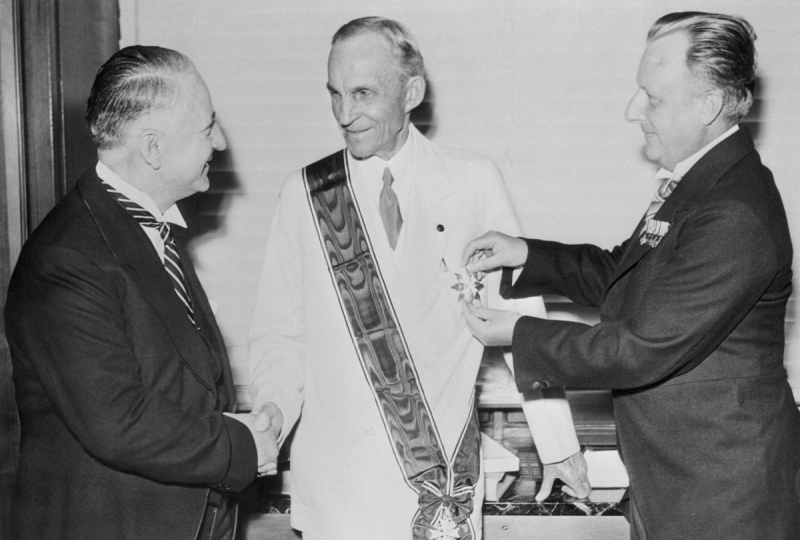
www.thehenryford.org 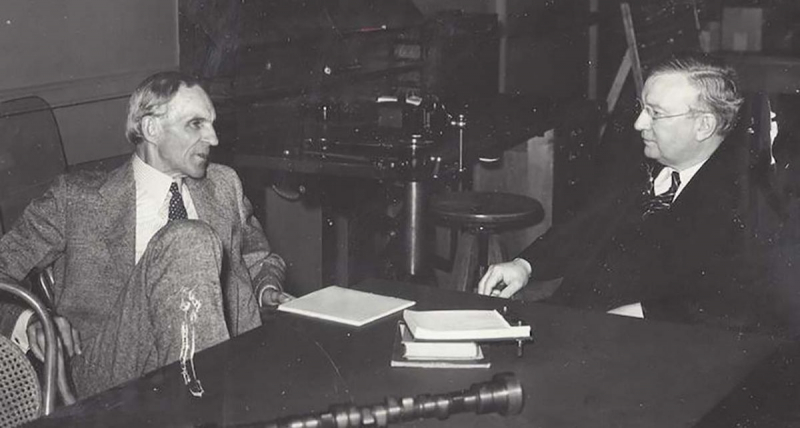
www.thehenryford.org -
The notorious American criminals Clyde Barrow and Bonnie Parker, sometimes known as Bonnie and Clyde, went on a two-year binge from 1932 to 1934 during which they committed several robberies across Texas and neighboring states. Even when he was surrounded by police, Clyde Barrow was able to escape. He was a very competent driver, and he also like to drive Ford V-8 vehicles, which contributed to this. Barrow frequently stole Ford V8s, taking advantage of every chance since the cars' powerful engines let him escape capture. According to rumors, Clyde even complimented Henry Ford in a letter for the excellent vehicle that Ford had created, which is one of the interesting facts about Henry Ford.
The letter's postmark showed that it was sent from Tulsa, Oklahoma, on April 10, 1934, and that Henry Ford received it at his office in downtown Detroit on April 13, 1934. Ford had his secretary prepare a "thank you" response after presuming the letter was genuine, and it was mailed to Clyde with the address General Delivery in Tulsa (although he never received it, as the Barrow Gang had headed out of Tulsa by then). While some have questioned the letter's veracity, others think it fits with Barrow's attention-seeking disposition. The Henry Ford Museum in Dearborn, Michigan is now exhibiting the letter on display.

www.thehenryford.org 
www.thehenryford.org -
Ford opposed military involvement and believed that war was a horrible waste of resources. Ford was quite critical of people he believed were funding war, and he made an effort to stop them. The pacifist Rosika Schwimmer won Ford's favor in 1915, and he promised to provide funding for a Peace Ship to the continent where World War I was raging. He was the leader of 170 peace activists. Ford went on the mission with Reverend Samuel S. Marquis, his Episcopal pastor. From 1913 through 1921, Marquis served as the department's chief at Ford. Ford discussed the project with President Woodrow Wilson, but he received no government backing.
To engage with peace advocates, his delegation traveled to neutral Sweden and the Netherlands. Ford, who was frequently made fun of, got off the ship as soon as it got to Sweden. Ford accused "German-Jewish bankers" of starting the war in 1915. However, Ford was also well known for his anti-Semitic beliefs. He backed projects with a lot of anti-Semitic material, such as The Dearborn Independent and The Protocols of the Elders of Zion. These were thought to have affected the development of Nazism and the Holocaust in the future.

en.wikipedia.org 
en.wikipedia.org -
The ill and elderly Henry Ford opted to take over as president when Edsel Ford, the Ford Motor Company's president, passed away from cancer in May 1943. Ford was getting close to 80 years old by this time, had suffered several cardiovascular events (variously described as heart attacks or strokes), and was generally no longer capable of handling such enormous responsibilities.
The majority of the directors opposed having him as president. But for the preceding 20 years, he had long had de facto power over the firm, even though he had never held an official executive title. The board and management had never taken his defiance seriously, and this time was no different. He was chosen by the board of directors and held office till the conclusion of the conflict. During this time, the firm started to lose more than $10 million every month (equivalent to $156,000,000 in today's dollars). To guarantee sustained war production, the administration of President Franklin D. Roosevelt had considered a government takeover of the company,[68] but the concept never advanced.
Ford retired in September 1945 after giving over the business president to his grandson Henry Ford II due to declining health. At the age of 83, he passed away at Fair Lane, his Dearborn home, on April 7, 1947, from a brain hemorrhage. Greenfield Village had a public viewing where up to 5,000 people an hour passed by the coffin. He was laid to rest in the Ford Cemetery in Detroit after the funeral services were performed at the Cathedral Church of St. Paul in Detroit.

www.thehenryford.org 
en.wikipedia.org





























